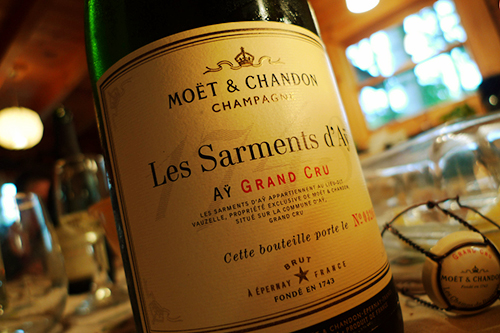
They both sound pretty swanky, don’t they? If you see the words, Grand Cru or Premier Cru on a bottle of Champagne, I’m sure that like most of us, you automatically see this as an indication of a superior quality wine. However, all is not what it may seem because these terms have not been a part of official Champagne language for just over four years.
Long before Champagne became synonymous with sparkling white wine, the region was already very popular for its fine, light-bodied, still reds. That’s not to say that wine from Champagne was any better than that of Burgundy, more that it was far easier – and therefore, more cost-effective – to transport to Paris than it was from further south. In 1911, the first official Échelle des Crus (quality scaling) was established, with an official rank being given to each village in the Champagne region. Only 17 out of the 320 villages were deemed to produce 100% quality wine, so wine from there was classified Grand Cru. Premier Cru was applied to the 41 villages which received a ranking of 90-99%. (The rest fell between 80-89% but this was not considered worthy of being given a designation.) Also, to be able to use the Cru designations, all grapes must have come solely from either the Grand or Premier Cru villages, which of course meant that should there be a low harvest, then a limited number of bottles would be produced.
As well as a way of determining quality, the main point of the Échelle des Crus was to ensure that growers would always get the best price for their grapes. For example, once the price for 100% quality grapes had been agreed between growers and buyers, if a vineyard had a 90% rating, the grower would receive 90% of that agreed price, 80%-rated grapes would sell for 80% of the price, etc. Unfortunately, although the system was originally supposed to be fairer for every grower, the reality was that vineyards which were closer to the press houses received higher quality rankings than those which were further away, simply because the sooner the grapes are pressed after being harvested, the better the quality of the juice, ergo, the finer the wine. Naturally, the farther away a vineyard is, the longer the time between harvest and pressing. The Échelle des Crus classification stayed in place until the early 1990s, when the EU introduced the free-market system.
In November 2010, the Institut national de l’origine et de la qualité (INAO) dropped the Échelle des Crus standard, after determining that it was far too broad, and had little bearing on wine quality, especially given that the designation was given to entire villages, not the individual vineyards. It doesn’t take a seasoned sommelier to understand that inferior wine could still be produced, simply by dint of the vineyard’s geography. Despite the abolition of Échelle des Crus, the Grand and Premier names are still allowed on some labels as a nod to history… but are not now in any way an indicator of quality.
While some growers may be unhappy about the abolition of the standard, growers of Meunier are finally getting a chance to prove the worthiness of their grapes. For centuries, they were considered inferior to the traditional Pinot Noir and Chardonnay grapes but now Meunier growers have a chance to prove what they’ve been claiming all along – that their grapes are more than capable of producing fine Champagnes.
0



Leave a Reply